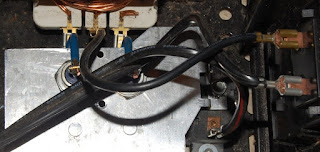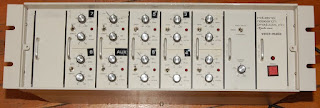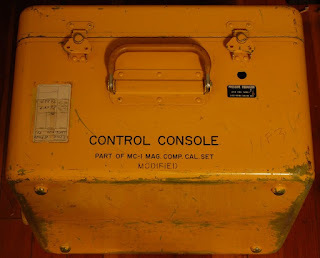
Here's the disassembled OE rectifier. AC enters the PCB at left which was riveted to the aluminum plate that doubles as heat sink and positive voltage rail (the slot at the upper mid point in the picture bolts to a thermal switch which delivers to the positive feed). The small wheel-like objects are the diodes, they were literally compression fit between the PCB and the four divots in the aluminum. One of the diodes is shorted.

The divots happen to be aligned with the fixed spade connectors at the secondary winding of the transformer, and two of them were drilled out to accept the DO-5 diodes shown. The diodes are 40HR10, rated at 40 amps.

My alignment isn't spot on, but all the materials involved have a bit of give so I'll make this work. In retrospect I probably could have built this with the diodes fed through the other side, but still feel that would put the lug a bit close to the case.

With minimal fuss this went together.

I wasn't incredibly concerned with diode polarity, if the anode/cathode of the new parts was reversed from the old I had the option of simply reversing my battery leads here. To my relief, the electrical orientation of the parts was correct right out of the gate.
After reassembly I took my untested, ailing battery and hooked it up. Current jumped to the top of the scale (so much for 2 amps) and the heatsink began to warm up, enough so that if left for a span of minutes it seemed conceivable that the heatsink could melt the insulation of the AC feed wires I had bent around it.
I required a trickle setting. This fix (unpictured, sorry) was achieved with an ON ON SPDT switch on the negative leg between the center tap of the transformer and the current meter. One position completes the circuit through a wire for normal operation, the other places a 150 ohm ten watt wirewound in line with the negative leg, reducing current into a dead short to less than one amp.
The truck battery remains in the realm of the non-existent, but I feel far more comfortable operating my charger from here on out.















































